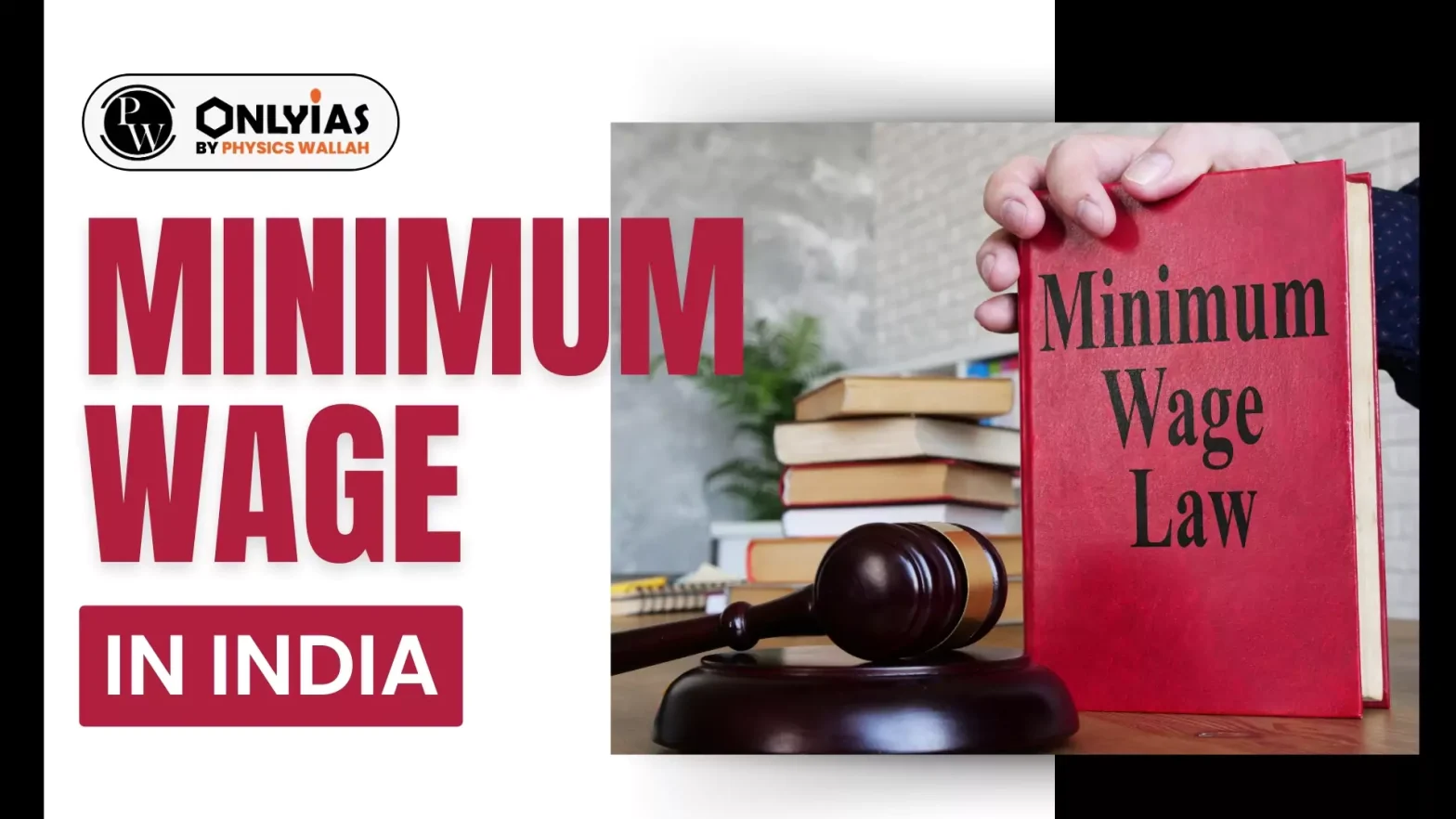Context
The Government of India’s decision to replace the minimum wage in the country with a scientifically calculated living wage by 2025, with expertise from the International Labour Organisation (ILO), is welcome.
Reforming Minimum Wage Policy in India
- Minimum Wage: The minimum wage is the lowest hourly, daily, or monthly pay rate that companies are legally required to provide to their employees.
- India’s Minimum Wage Disparity: India’s National Floor Level Minimum Wage (NFLMW) of ₹176 ($2.1) per day, last updated in 2017, is one of the lowest in the Asia-Pacific region, surpassed by China’s $11.9, Vietnam $6.5 and even Bangladesh’s $3.7.
- Brazil’s minimum wage of $47 per day is closer to the figure in developed economies like Australia ($14.8 per hour), the UK ($14.1) and the US ($7.2).
- Adjusting Dearness Allowance: Despite India’s stagnant minimum wage, the government regularly adjusts the dearness allowance (DA) for central government employees to counter inflation. In March 2024, it was last raised by 4%, along with associated allowances.
- Need to Align India’s Minimum Wage: It’s time India aligns the floor minimum wage of ₹176 per day with the cost of living and inflation, or replace it with a living wage considering expenses on food, transport, housing, education, healthcare, etc, as defined by ILO for a decent standard of living.
Enroll now for UPSC Online Course
Need For Increasing Minimum Wage
- Impact of Wage Norms on Indian Workforce: With low female workforce participation and most formal jobs offering mostly minimum wages to skilled/semi-skilled employees, while a few highly skilled workers earn above it.
- Current wage norms impact the majority of India’s workforce and particularly households that rely on a single earner.
- Social Benefits of Wage Reform: Socially, it could alleviate poverty, reduce inequality and improve living standards.
- Increased Spending and Demand Boost: Economically, increased incomes are likely to boost spending and stimulate the Indian economy. While initial savings may limit the immediate spending impact, sustained wage growth could eventually drive up demand, particularly for affordable housing, and lead to increased mortgage loans and home ownership over time.
Impact of Wage Hikes
- Wage Hike Effects: A study conducted in Indonesia discovered that increases in wages led to reductions in work hours and formal employment, while a South African study on domestic workers revealed that wage hikes had minimal effects on employment levels.
- Impact of Minimum Wage Hikes on India’s Formal Sector: With a lack of India-specific studies, it’s uncertain if minimum-wage hikes would hinder recruitment in the formal sector, where much emphasis is placed on the value of human resources and larger firms have a greater capacity to pay more.
Way Forward
- Enforcing Fair Living Wage Regulations: In introducing a mandatory fair living wage, strict enforcement of wage regulations is crucial. Of India’s estimated 550-million-strong working population, only about a fifth are formally employed, with the rest being self-employed and casual labourers.
- Government Support Measures for Compliance: Ensuring compliance across employee status, gender and skill level would pose a challenge.
- Government support, such as tax waivers, could ease the economic strain on smaller businesses during the initial phase of strict enforcement.
- Ensuring Social Security Benefits: Additionally, enhanced minimum wages should not be accompanied by increased salary deductions for social-security benefits assured under provident fund and Employees’ State Insurance Corporation (ESIC) arrangements.
- Utilizing ESIC Surplus: Rather, the government must abolish ESIC contributions by employees and reduce the employer’s ESIC contribution from 3.2% to 1.5%, which could be done easily because the ESIC has a ₹65,000 crore surplus (which has been going up by ₹8,000-9,000 crore annually)
- Revision of Employees’ Provident Fund Contributions: For the Employees’ Provident Fund Organization, the employee’s contribution should be reduced from 12% to 8% for monthly wages under ₹15,000,while retaining 12% for those earning more, given that Indian workers display a preference for higher take-home pay over social-security deductions.
Enroll now for UPSC Online Classes
Conclusion
Once established scientifically, the country’s minimum or living wage should be adjusted to inflation every two years. Strict implementation could help more individuals make the transition to formal employment, while raising living standards overall and supporting economic growth.
![]() 16 May 2024
16 May 2024

